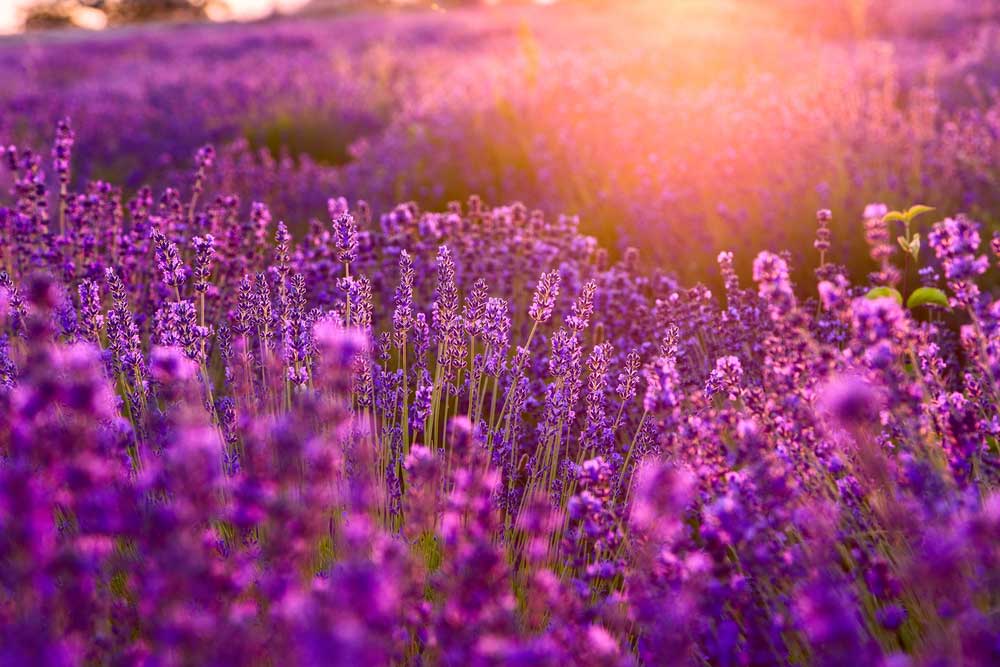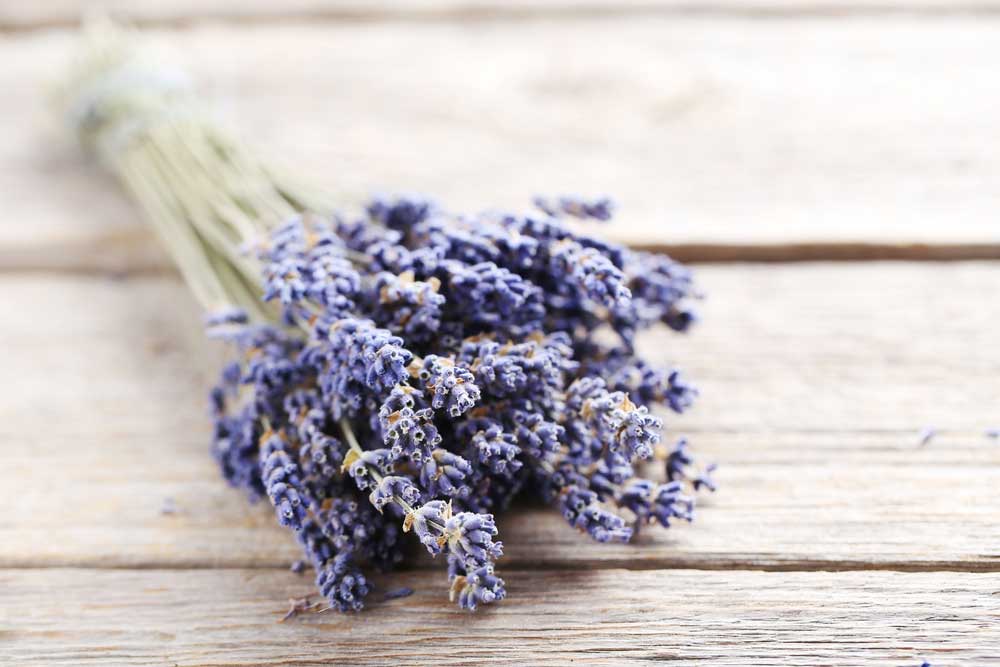Make way for her, the queen of herbs, lavender! Beautiful, fragrant and full of benefits for the body and mind, lavender needs to have a corner there in your home.
And believe me: planting lavender at home is possible! And here we tell you how. Follow today's post to learn how to plant and care for lavender properly.
Benefits of lavender

Before you even start tinkering with the soil to plant lavender, it is very worthwhile to better understand the benefits of this fragrant plant and to know how you can use it.
Lavender is a shrub and woody stem, very similar to rosemary. The lavender leaves have a greyish green color and their flowers enchant by the delicate shade of lilac, reaching a soft purple in some species.
Both leaves and flowers can be used for therapeutic, flavoring and culinary purposes.
In aromatherapy, for example, lavender essential oil is one of the most used and popular, being one of the few that can be used pure on the skin.
Did you know that lavender is known as the relaxation herb? Yes, the plant has calming and relaxing effects that can be absorbed by the body in both tea and oil forms.
Lavender is also perfect for easing anxiety, stress and insomnia, being very useful for those who want to sleep better.
Believe me: just smelling lavender is possible to feel calmer and more relaxed, and can even relieve headaches caused by stress and fatigue.
Lavender can still be used to soothe the skin in cases of insect bites, skin rashes and minor burns. Just make a compress with the herb in place and you're done.
Skins with acne and excessive oil problems also benefit from lavender compresses or facial masks incorporated with the plant.
For those who want to use lavender in cooking, know that the herb is excellent for flavoring oils, preserves and compost. The herb can also be used to add flavor to ice cream, pasta, sauces and broths.
How to plant lavender in a pot

Coming from the Mediterranean, lavender is a plant that loves mild climates, that is, neither too hot nor too cold.
Among the 39 species of the genus Lavandula, only the species Lavandula Dentata managed to adapt well to the climate of Brazil. And most likely it will be the one that you will plant there in your house.
And what is the first thing you need to know before planting lavender? The kind of soil she likes best.
Lavender is typical of regions with a sandy and dry climate, so the perfect soil for this plant is as airy as possible.
For this, the ideal is to mix soil with limestone or sand. Another very important factor for the good development of lavender is drainage.
Therefore, provide a pot or planter with good ability to drain excess water. A good way to do this is to line the bottom of the pot with expanded clay.
And speaking of a pot, ideally, lavender should be planted in containers about 30 centimeters in diameter.
In beds and gardens, plant lavender with a minimum spacing of 30 to 90 centimeters between other plants.
Another important tip: avoid planting lavender in pots and planters together with other plants, this increases the competition for space and nutrients. Leave her alone, in her corner!
After providing adequate soil for your lavender, it is time to plant. Nowadays it is very common to find seedlings “footprints” of lavender to sell in garden stores and even in supermarkets.
But if you prefer, you can make lavender seedlings at home. Like? Using the cutting method, that is, placing a stem stem about ten centimeters from an already developed plant in the ground.
Another option is to plant lavender using seeds. Just sow in the final place, which can be either a pot, or a flower bed or garden. However, in this case, the process is slower and takes longer, and it can take up to six weeks for the first seeds to begin to germinate.
Planted lavender? Now it's time to take care of her properly. See how to do this with the following tips. But first, a reminder is worth: until your lavender is well caught and rooted in the soil, try to keep it sheltered from the sun.
How to care for lavender
There are people who think that lavender is a sensitive plant and difficult to care for, but the truth is that it just wants affection and attention.
For the lavender to grow happily in your home, you will need to look at it every day. This is because the plant has different needs for irrigation and sun exposure. But don't worry, she will always warn you, you just need to keep an eye on.
Brightness
Both light and temperature are decisive factors for the health and vitality of lavender. This means that excess light and heat is just as damaging as lack.
The ideal climate for lavender here in Brazil is that of autumn and winter, a time when temperatures are milder. In summer, lavender can suffer from excessive heat, so the tip, if your lavender is planted in a pot, is to put it to sunbathe in the morning, when temperatures are not so high and collect it to a half shade spot in the afternoon. About four hours of light a day is enough.
But if the intention is to plant lavender in a garden or flower bed, choose a place where the incidence of light is greater in winter and in summer it can be in the shade at the hottest times of the day.
Remember that lavender is native to the Mediterranean climate, so it gives a discount, after all it has already had to make a daring effort to adapt to our tropical climate.
Watering
Just like the light, lavender watering also needs to be well controlled. The plant prefers drier than humid soils, so never leave the pot soil soaked. Prefer to water a little every day instead of over watering only once a week.
In general, whenever the lavender needs water, it warns. The leaves and flowers are wilted, especially after a long hot, dry day. In cold and humid days, watering can be well spaced.
And here's the tip: always touch the soil before watering to make sure the soil is dry and in need of water.
Harvest
If everything is going well, your lavender will be in full bloom between the months of June and August. At that time, your pot will be the favorite place for bees and butterflies after the sweet and aromatic nectar of the plant.
Enjoy yourself too and harvest the flowers you need and use them, after drying, in sachets to perfume cabinets, to make tea, flavor oils or beauty treatments.
To harvest lavender flowers correctly, use pruning shears and cut between the stems. Don't cut the whole branch
Fertilizing
Lavender is a rustic plant by nature and enjoys limestone and sandy soils. So there is no need to worry about fertilizing the plant often. Every three months is ideal.
You can use fertilizer type NPK 10-10-10 or organic fertilizers, such as earthworm humus, chicken manure or one that you take straight from your wonderful compost.
Pruning
After flowering you can perform a maintenance pruning on the lavender to ensure the next flowering.
Do this by cutting the old, dry branches, but be careful to always prune above the first branch fork, otherwise you lose the plant. That's because when lavender is pruned wrongly, it just doesn't grow anymore.
Take advantage of the pruning time to assess whether the pot size is suitable for your lavender. Because it is a perennial plant, lavender continues its growth process and, therefore, can suffer if it is in a very small location.
In this case, the ideal is to replant it in a larger pot or a flower bed.
Wedge: Brazilian Provence
And if you are on the lavender lovers' team don't miss the opportunity to visit the city of Cunha, in the interior of SP.
The city is known as the Brazilian Provence, thanks to its fragrant lavender fields very similar to the French.
It is worth getting to know the city and the laundry facilities there, so you can learn to learn a little more about planting and cultivating lavender.



